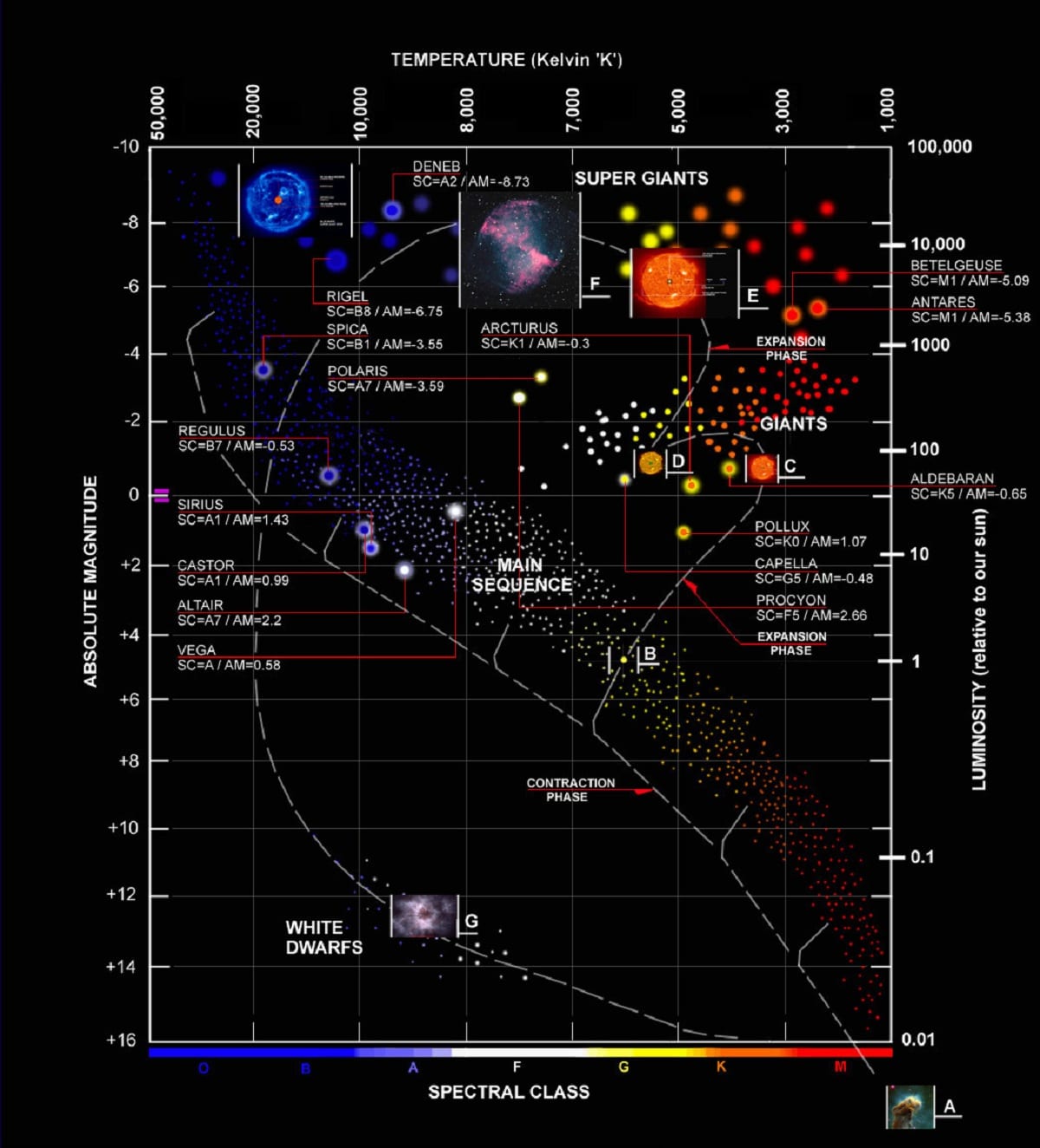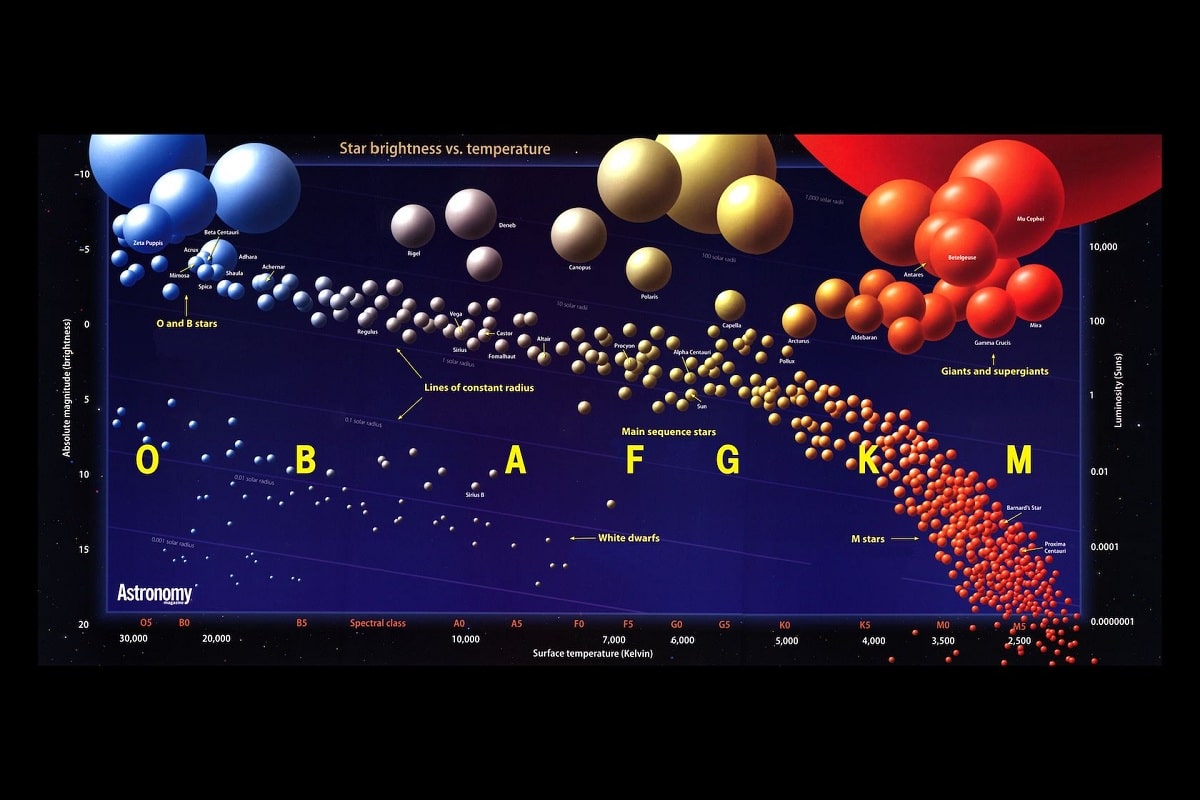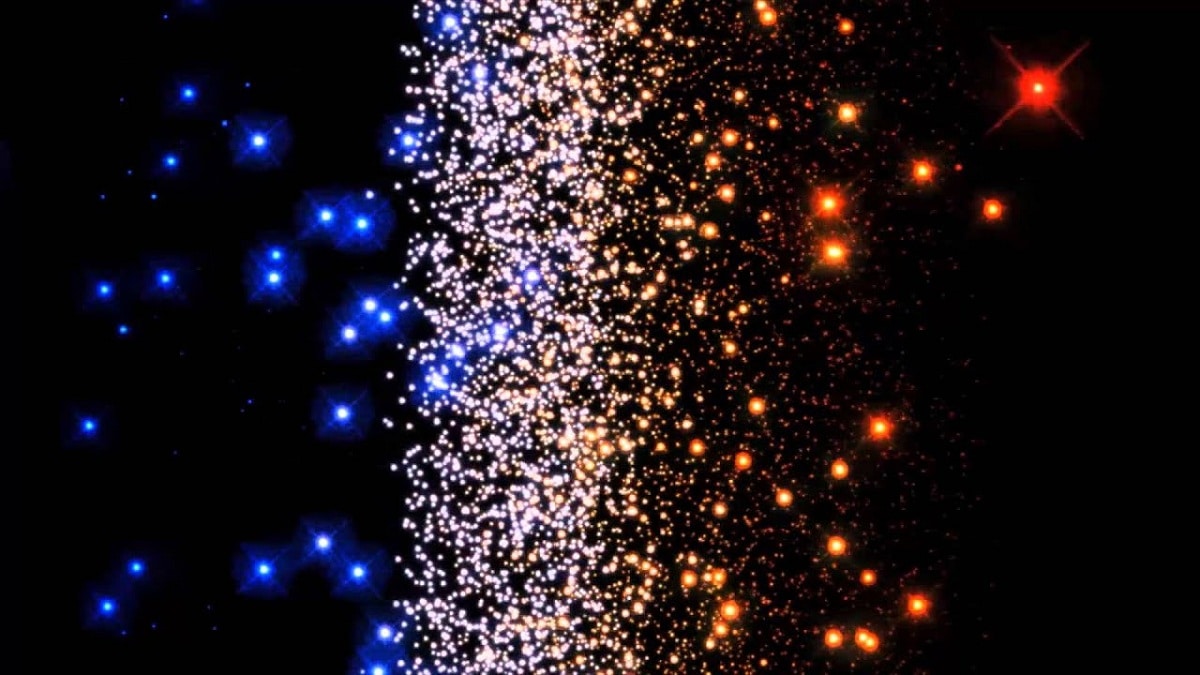
One of the most recognizable schemes for classifying elements in the world of science is the periodic table. If we analyze broadly and in a simplified way we see that the Hertzsprung-Russell diagram it is like a periodic table, but of the stars. With this diagram we can locate a group of stars and see where it is classified according to its characteristics. Thanks to this, it has been possible to advance considerably the observation and classification of the different groups of stars that exist.
Therefore, we are going to dedicate this article to tell you all the characteristics and importance of the Hertzsprung-Russell diagram.
Features and operation

We are going to try to understand how the Hertzsprung-Russell diagram works and what it consists of. The two axes on the graph measure different things. The horizontal axis measures two scales that can be summarized into one. When we go to the bottom, let's scale the surface temperature of the star in degrees Kelvin from the highest temperatures to the lowest temperatures.
At the top we see something different. There are a number of sections each marked with a letter: O, B, A, F, G, K, M. This is the spectral type. It means that it is the color of the star. As with the electromagnetic spectrum, it ranges from a bluish color to a red color. Both scales indicate the same thing and agree with each other since the spectral type is determined by the surface temperature of the star. As the temperature of it increases, its color also changes. It goes from red to bluish, before going through orange and white tones. In this type of diagram you can easily compare what temperature each color that the star has can equal.
On the other hand, on the vertical axis of the Hertzsprung-Russell diagram we see that it measures the same concept. It is expressed in different scales such as luminosity. On the left side luminosity is measured taking the sun as a reference. In this way, a fairly intuitive identification of the luminosity of the rest of the stars is facilitated and the sun is taken as a reference. It is easy to see if a star is more or less luminous than the sun since we have it easy when it comes to visualizing it. The right scale has a slightly more accurate way of measuring luminosity than the other. It can be measured by absolute magnitude. When we look at the forest stars one squirrel more than others. Obviously, on many occasions this happens because the stars meet at different distances and not because one is brighter than the other.
Star shine

When we leave the sky, we see that some stars shine brighter, but it only happens from our perspective. This is called the apparent magnitude of, although it has a small difference: the apparent magnitude of a star is made by fixing the value that such luminosity would have outside our atmosphere, not inside. In this way, the apparent magnitude will not be representing the real luminosity that the star has. Therefore, a scale like the one in the Hertzsprung-Russell diagram cannot be used.
In order to be able to measure the luminosity of a star well, the absolute magnitude must be used. It would be the apparent magnitude that a star would have 10 parsecs away. The stars would all be at the same distance, and therefore the apparent magnitude of a star would be converted into its actual luminosity.
The first thing to observe when looking at the graph is a large diagonal line that runs from the upper left to the lower right. It is known as the main sequence and it is in which a large part of the stars, including the sun, meet. All stars produce energy by fusing hydrogen to produce helium within them. This is the common factor that all of them have and what makes their luminosity different is that what they are part of the main sequence is their mass. In other words, the more mass a star has, the faster the fusion process will take place, so it will have more and more luminosity and surface temperature.
Therefore, it follows that the stars that have a greater mass are located further to the left and above so they have more temperature and more luminosity. These are the blue giants. We also have the stars with a lower mass that are on the right and below, so they have less temperature and luminosity and are the red dwarfs.
Giant stars and supergiants of the Hertzsprung-Russell diagram

If we move away from the main sequence we can see other sectors within the diagram. At the top are the giants and supergiants. Although they have the same temperature as many other main sequence stars, they have a much higher luminosity. This is due to size. These giant stars are characterized by having burned their hydrogen reserves for a long time, so they have had to start using different fuels such as helium for their function. It is then when the luminosity diminishes since the fuel is not so powerful.
This is the fate that holds a large number of stars that are located in the main sequence. It depends on the mass they have, they can be gigantic or super-gigantic.
Below the main sequence we have the white dwarfs. The final destination of most of the stars we see in the sky is to be a white dwarf. During this phase, the star adopts a very small size and an enormous density. As time goes by, the white dwarfs move further and further to the right and down the diagram. This is because it constantly loses luminosity and temperature.
These are basically the main types of stars that appear on this graph. There is some current research that tries to highlight and focus on some of the extremes of the graph to know everything more in depth.
I hope that with this information you can learn more about the Hertzsprung-Russell diagram and its characteristics.